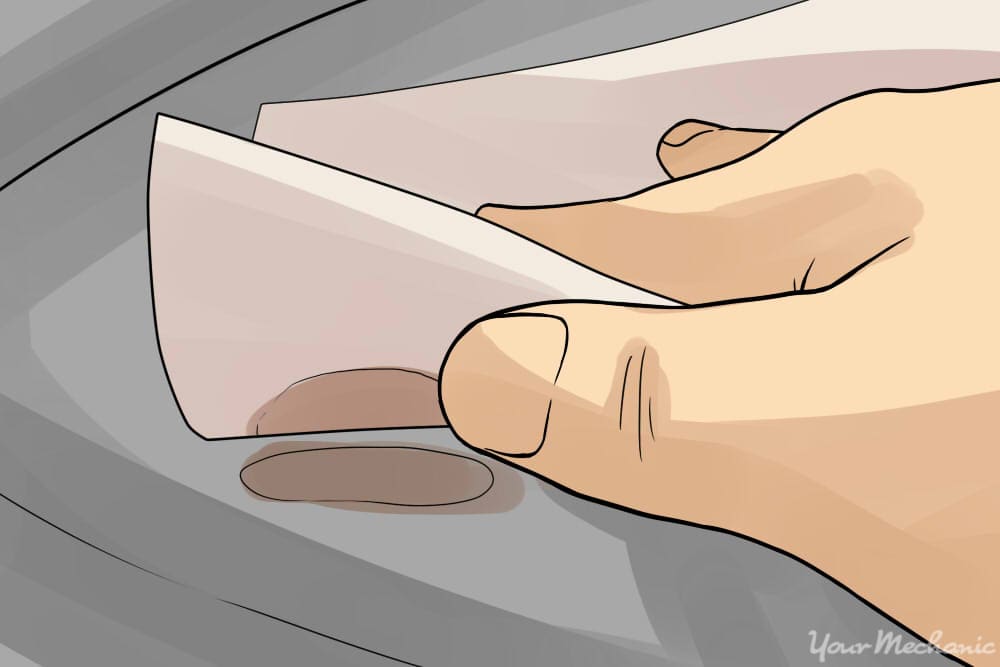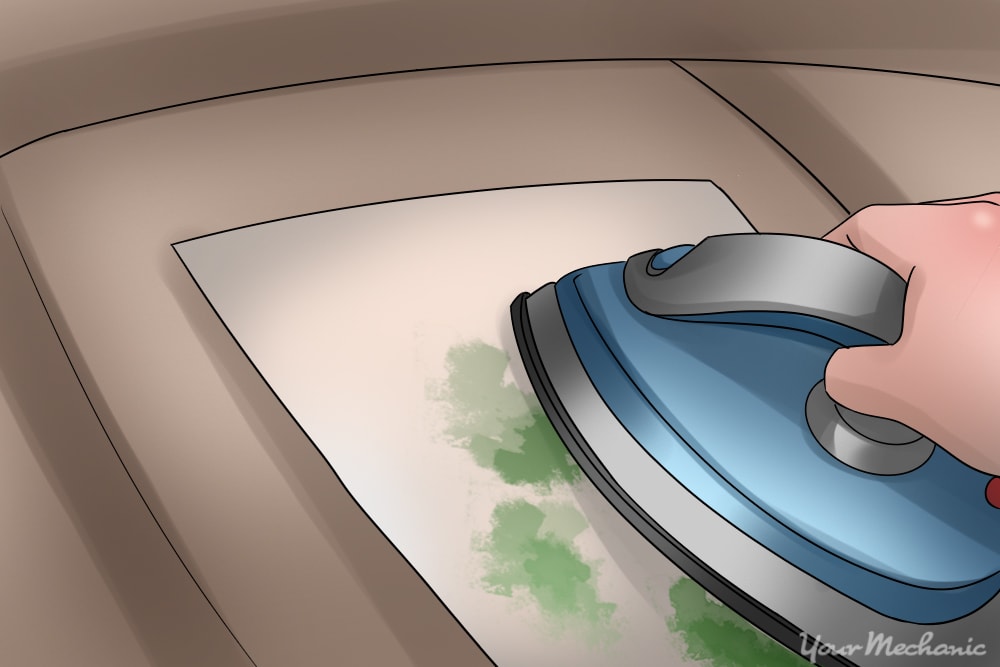

If you perform your own car repairs, work in an place that uses oil or grease regularly, or encounter oil or grease, you may track grease or oil into your vehicle.
Grease and oil are difficult to remove because they are not water-based materials. In fact, treating a grease or oil stain with water will only cause it to spread.
It’s easy to track in oil from a parking lot or driveway onto your car’s carpet or drop oily substances onto your upholstery. With the right products and a few minutes of your time, you can clean up these spills and keep your car’s interior surfaces looking like new.
Method 1 of 4: Prepare upholstery for cleaning
Materials Needed
- Clean cloth
- Metal paint scraper or plastic spoon or knife
- WD-40
Step 1: Remove excess grease or oil. Scrape off excess grease or oily substances from the fabric. Scrape gently at the stain, keeping the scraper at an angle, to remove as much of the grease or oil as possible.
- Note: Don’t use a sharp knife or object which might tear the upholstery.
Step 2: Blot away damp grease. Use a clean cloth to blot away grease or oil. Don’t wipe the stain as it will push it further into the upholstery and spread it.
- Note: This step only works if the stain is still damp. If the stain has dried, squirt a few drops of WD-40 to dampen it again.
Method 2 of 4: Clean fabric upholstery with dish soap
Materials Needed
- Bucket of warm water
- Dishwashing liquid
- Toothbrush
Step 1: Apply dishwashing liquid to the stain. Squirt a few drops of dishwashing liquid onto the upholstery. Rub it gently into the grease stain with a fingertip.
- Tip: Use a dishwashing liquid that is good at cutting grease.
Step 2: Add water on the stain. Use a clean cloth to soak up the warm water and squirt a small amount onto the greasy spot.
Let the dishwashing solution to set for several minutes.
Use an old toothbrush to scrub gently at the stain. Work gently in small circles, trying not to go beyond the border of the existing stain.
The soap will start to froth which starts to release the grease from the fabric.
Step 3: Blot up excess liquid. Use a dry cloth or paper towel to blot up the excess liquid.
- Tip: Don’t wipe the liquid or you could spread the stain.
Step 4: Remove the dish soap. Use a damp cloth to remove the dish soap. Rinse it out and continue blotting the stain until all of the dish soap is gone.
- Tip: You may have to repeat the process more than once to remove all of the stain.
Allow the upholstery to dry completely.
Method 3 of 4: Remove grease or oil with baking soda
Materials Needed
- Baking soda
- Metal paint scraper or plastic spoon or knife
- Soft brush
- Vacuum
Step 1: Prep your fabric surface. Get as much of the grease off the fabric surface using a scraper.
Step 2: Put baking soda on the stain. Sprinkle baking soda on the grease stain.
The baking soda is ultra-absorbent and will capture the grease or oil particles, which can then be removed.
Step 3: Brush the baking soda. Rub the baking soda into the fabric with a soft-bristled brush.
- Tip: Use a brush that won’t pull your fabric threads or cause pilling in the surface.
Step 4: Repeat the process. Apply more baking soda if you notice it is clumping or discolored by the grease.
Let the baking soda sit on the fabric surface for several hours. Overnight is best.
Step 5: Remove the baking soda. Vacuum the baking soda off of and out of the upholstery.
- Tip: Use a wet-dry vacuum if you have one available.
Step 6: Check your upholstery. If there is grease or oil still present, repeat the baking soda method again, to completely remove it.
You can also try another process to remove the stain if the baking soda doesn’t remove it all.
Method 4 of 4: Remove grease or oil from the carpet
Materials Needed
- Brown paper bag, towel, or paper towel
- Carpet shampoo
Iron
Tip: Before using any products, test a small area first to ensure it doesn’t fade or alter the color of the fabric.
Step 1: Remove excess oil or grease. Use the knife or paint scraper to remove any excess oil or grease from the carpet. As with the fabric, scrape gently at an angle to avoid damaging the carpet fibers.
Step 2: Place the paper bag on the stain. Open up a brown paper sack or paper towel and place it on top of the stain.
Step 3: Iron over the paper bag. Heat up the iron to a warm setting and iron over the paper sack. This step transfers the grease or oil to the paper.
Step 4: Apply carpet shampoo. Apply carpet shampoo to the carpet and scrub with a carpet brush.
Step 5: Remove excess water. Blot up excess water with a clean cloth or paper towel and allow carpet to dry completely.
It is best that you remove any oil or grease stains inside your vehicle as soon as possible.
Though oil and grease stains are slightly different, there are a few common techniques that work to remove stains left by either. You may have to use a combination of the different methods given in this article to remove tough grease or oil stains.






